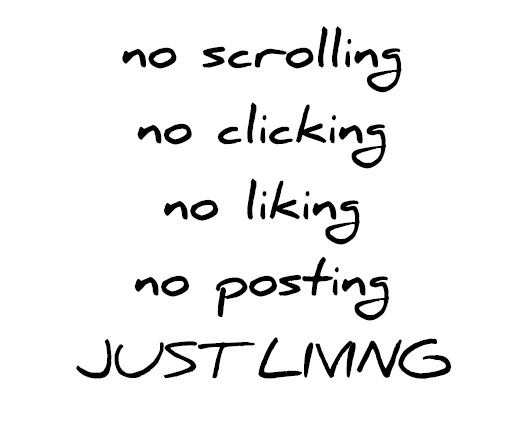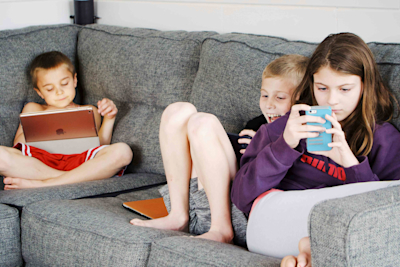
Impact of Unplugging on Shared Spaces
Views on the Impact of Unplugging on Shared Spaces & The Desire for Communal Spaces to Look Different
Written by: Jadelin Pikake Felipe Design by: Rachel Wu Edited by: Kathy Dethlefsen
Infographic
My current day thoughts…
Offline. Online. These days during the pandemic distinguishing when we’re offline or online seems more difficult. For many of us who have transitioned to working from home it’s the similar feeling that the lines between our personal and professional lives now feel blurred. As someone who is a visual learner and someone who loves and appreciates dance as an expressive art form, when I think of the terms ‘offline’ and ‘online’ I now envision a contemporary dancer moving both fluidly and rigidly back and forth between the two offline and online spaces. Like with most things in life, moderation is key and staying in one place for too long usually comes with its own benefits and consequences. Finding the healthy balance and relationship with our phones and other technology is an ever-evolving dance form--some days smooth like jazz and others like the dramatic-feel of tango.
Since the pandemic and with 2020 being an election year in the United States, I found myself off Facebook more than usual--in attempt to quiet the noise it stirs up--and found myself spending more time on the social media platform Instagram. Yes, I was on Instagram for what felt like a quieter space online, but also--in retrospect--for a community of artists and creative makers I admire, am inspired by, and surprisingly missed and longed for. It wasn’t until I did some journaling that I realized one of my favorite things to do in the California Bay Area before the pandemic was attending art festivals. Streets are blocked off for foot-traffic only and rows of pop-up tents are put up to house artists’ booths and food stands. Why was I spending so much more time on Instagram than I had before? It wasn’t until much later when I connected the dots between my increased time online on Instagram and it being so long since I attended one of the street art festivals I miss so much. The finding from my research that phones and social media offer an entry way into one’s social world made more sense to me.
For many of us, the mere presence of someone’s phone in a social situation can distract from what’s happening at that moment. Yet, from my observation, often is nothing said about the phone creating an interruption even if it isn’t being used. Along with the college students who participated in my research who lacked the confidence to speak up, adults like myself also lack the confidence and language to say something. It’s as if we don’t want to be rude. And who are we to say something? In my work with students and families while working at colleges and universities and having colleagues who are parents and grandparents themselves, I see a lot of opportunity for us all to develop what a socially acceptable etiquette would look like when it comes to phone use in social settings and the common language to use to address this.
On a different topic, college students in my research felt inundated with information they received in virtual forms and they also sought for their colleges and universities to have more communal spaces where they could unplug. With students receiving so much information electronically--email, e-newsletters, social media, learning management systems--I wonder if a simple directory would be useful. A directory directing students as they navigate their school experience to know where to look and go for certain information. What information for students makes sense to still be printed in hard copy? What information shouldn’t be buried in an email or website? Schools will need to ask and collaborate with students to understand and identify the best mediums to communicate, both digitally and non-digitally.
Creating or adapting physical communal spaces on school campuses to look different and include unplug zones will obviously be paused for those schools who have moved to full online classes. However, it raises the idea about if and how virtual community spaces should be created, look, and be experienced. How can teachers add a community space to their classrooms--whether online or offline--to honor students’ desire to unplug and have face to face social time. Carving out this intentional time for students (teachers, too) and communicating its purpose and importance will be left to teachers, administrators/senior leaders, and school campuses to model as an important component to a healthy organizational/school culture.
Questions to consider:
How do we go about in our local communities, including in schools, to decide what information we receive should be disseminated digitally and non-digitally (email, e-newsletters, physically printed, social media) and what our physical and virtual communal spaces should look and feel like (school campuses, parks and playgrounds, restaurants and bars, concerts)? What entity in our communities should lead this effort?
Actions to experiment with:
For teachers and schools: Think about what unplugged communal, community spaces look like, on physical campuses and virtually. How will it look, feel, be experienced, and how will its importance be communicated?
For students: Feel empowered to speak up and share ideas with your teacher and school about what intentional, scheduled time, and spaces where you can either unplug from your devices or be plugged in to be social--both in your physical and virtual spaces. There’s a reason why we had playground recess time when we were kids.
For everyone:
- Language to consider practicing when a phone is interruptive in a social setting, and to help with developing confidence and speaking up about the topic.
+ “Hey, I really want to enjoy this _____ (activity) with you. Let’s try putting our phones away and have some fun!”
+ “I want to challenge myself and experiment with experiencing this ____ (activity) without our phones and see what that is like, or maybe I’ll take a couple of pictures or videos after we’re done. You want to try it with me?”
+ “I can be honest with you, right? I feel _____ (emotion) when you are on your phone so often. Can we chat about this together?”
- Note: Try these out. Test how it feels. Model the behavior. Adapt as needed. Don’t be afraid to start conversations with those close to you to discuss your comfort level of phone use in social settings (physically and virtually) because we all have to start somewhere. Share in the comment section what has worked or not worked for you.
If you haven't read the first part of Jadelin's blog post, please go to:
The author: Jadelin has over thirteen years of professional experience in university and college student development, EdTech, and research. She holds a BA in Ethnic Studies from the University of Hawai’i at Manoa and a MA in Organization and Leadership from the University of San Francisco. Currently, she’s a part of the Golden Gate University Development & Alumni Relations team and is building a Linkedin-like online community for networking and mentorship for adult-learner students, alumni, faculty, and staff; and is looking for ways to incorporate digital wellness. Jadelin currently lives in Northern California and in her unplugged time she enjoys dancing hip hop, going to the beach, and finding delicious sushi and Korean food.
Related stories

What happens when you use your phone in bed?
Using your phone in bed harms sleep and well-being. Learn how to break the habit with mindful tips and Mudita alarm clocks for restful nights

What Is Sleepmaxxing? The Trend for Your Best Night’s Sleep
Discover Sleepmaxxing, the viral trend elevating sleep into a self-care ritual. Optimize rest with sleep hygiene, tech-free zones, and mindful alarm clocks.

How Technology is Reshaping Childhood & Society
Explore how technology shapes childhood and society, and how mindful tech and tools like Mudita Kompakt can help combat its downsides.
If you'd like to receive the best stories from our blog, keep up to date with our progress and get notified about our product releases and special discounts.